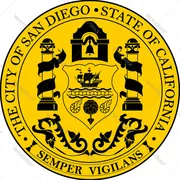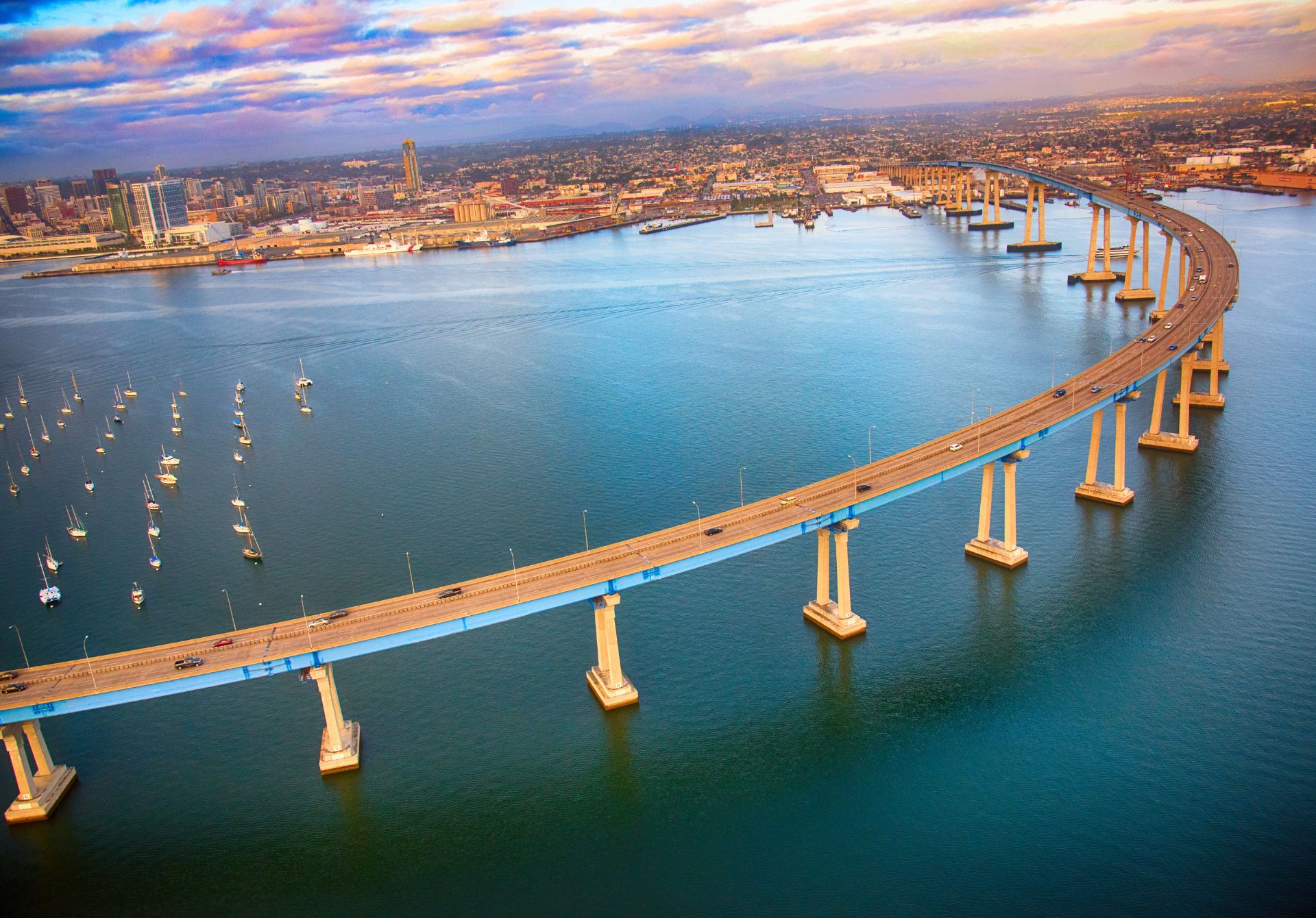The Coronado Bridge, officially known as the San Diego-Coronado Bridge, is an iconic structure that connects San Diego with Coronado Island. With its distinctive curved design and sweeping views of the San Diego Bay, the bridge is not only a vital transportation link but also a beloved architectural landmark. Completed in 1969, the bridge has played a pivotal role in shaping the region’s economic and cultural landscape.
The Construction and Design of the Coronado Bridge
Constructed in the late 1960s, the Coronado Bridge was designed to accommodate both the practical needs of increased traffic and the aesthetic demands of a city known for its beautiful skyline. The bridge spans 2.12 miles (3.4 kilometers) across the San Diego Bay, with a clearance of 200 feet (61 meters) at its highest point, allowing large naval vessels to pass beneath it.
The design was spearheaded by architect Robert Mosher and engineer William C. Grenfell, who opted for a curved path rather than a straight one to extend the bridge length without steep inclines. This gentle curve allows vehicles to maintain an even climb, improving safety and comfort for drivers. The bridge features five lanes, with reversible lanes to accommodate peak traffic flow in either direction, depending on the time of day.
Key Features of the Coronado Bridge
One of the most notable features of the Coronado Bridge is its striking blue color, which complements the surrounding bay and coastal environment. The design of the bridge was not just functional but also sought to enhance the natural beauty of the area. Its height and location provide stunning panoramic views of downtown San Diego, the Pacific Ocean, and the naval base on Coronado Island.
Another key feature is the use of precast concrete segments, a pioneering technique at the time of construction. This method allowed for faster assembly and reduced the overall cost, making the project both time-efficient and budget-friendly. The bridge’s 30 piers were carefully placed to withstand earthquakes, a crucial consideration given San Diego’s proximity to seismic zones.
Economic and Cultural Significance
Before the Coronado Bridge was constructed, access to Coronado Island was primarily via ferry or a long drive around the bay. The bridge revolutionized transportation between San Diego and Coronado, significantly reducing travel time and facilitating economic growth on both sides. Today, it serves as a key commuter route, with more than 80,000 vehicles crossing it daily.
Beyond its functional role, the Coronado Bridge has also become an important symbol of the city. It frequently appears in promotional materials for San Diego and has been featured in numerous films and television shows. Additionally, the bridge is celebrated annually during the Coronado Bay Bridge Run/Walk, which attracts thousands of participants who enjoy a rare opportunity to traverse the bridge on foot.
Challenges and Modern Developments
Despite its many benefits, the Coronado Bridge has faced challenges, particularly in terms of traffic congestion and safety. As the population of the region has grown, the bridge has struggled to accommodate the increasing number of vehicles. Efforts have been made to improve traffic flow through better lane management and monitoring systems.
In recent years, the city has also focused on enhancing the safety features of the bridge, particularly in response to concerns about suicide prevention. In 2019, plans were set in motion to install a suicide barrier on the bridge to prevent tragic incidents. This project has become a priority for local government and advocacy groups.
The Coronado Bridge stands as a testament to innovative engineering and design. Over the decades, it has become a critical piece of infrastructure for San Diego and Coronado Island, significantly impacting transportation, tourism, and the local economy. While the bridge faces modern challenges, its cultural and architectural significance remains undeniable. As the city continues to develop, the Coronado Bridge will likely remain a central feature in San Diego’s skyline and a key link between the two thriving communities.

